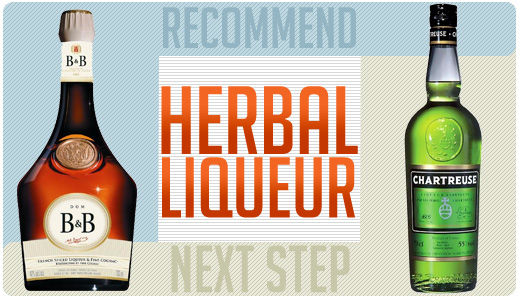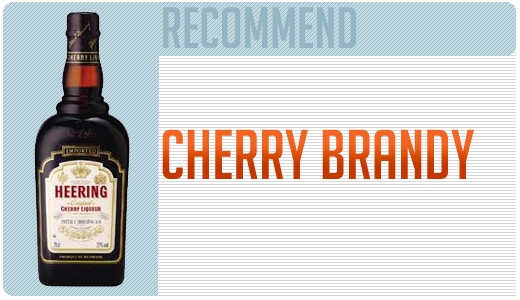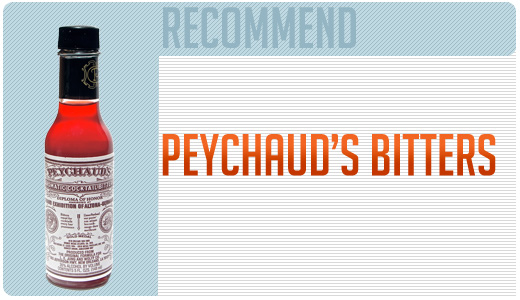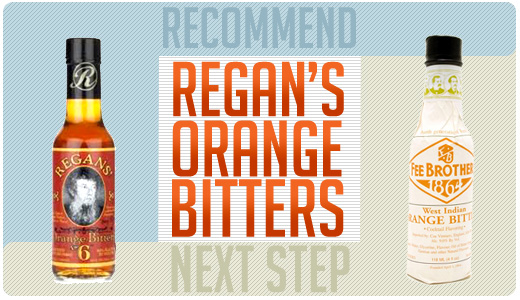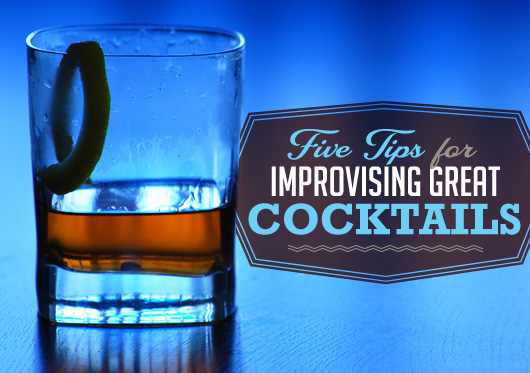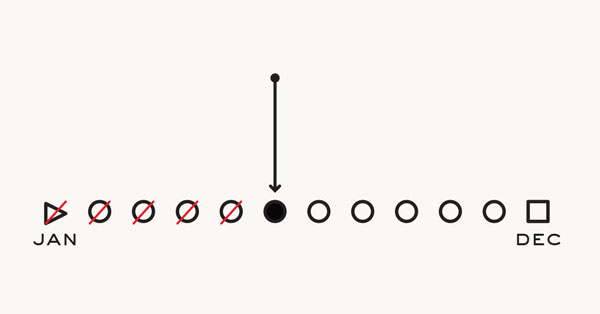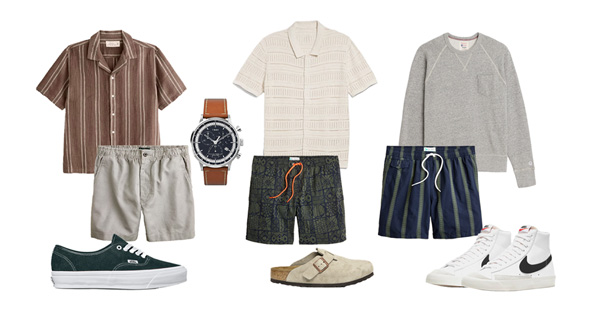Even before you throw budget into the mix, putting together a serviceable bar can be a difficult proposition. Liquor stores can be intimidating and overwhelming at times, and while we’re seeing a definite push here in the US to make them more friendly places to shop, you’ll still often encounter employees who just don’t know much about their products. When you throw budgetary concerns on top of that, it only adds to the problem – sure, it’s easy to guess that the $60 bottle of bourbon is going to be good, but which $20 bottle won’t taste like cistern water filtered through stove ash?
Primer and I are here to help with this guide to building a bar on a budget. I’ve started by splitting our list into two sections: must haves, and nice-to-haves. The goal of the must-haves section is to give you the most versatility with a minimum of bottles (and expense). The nice-to-haves will round out your bar and greatly enhance the number of cocktails, both classic and modern, that you can craft. In addition, I’ve listed a “next step” option for most bottles, in case you’re feeling particularly flush and want to splurge (a bit).
As with anything, you can keep on climbing up the price scale, and we could just as easily put together a bar where the least-expensive bottle on the list cost upwards of sixty bucks. The truth, though, is that you can make extremely delicious cocktails without breaking the bank, and that’s what we’re here to show you.
Oh, one last thing: all prices are approximate, and represent the cost of a standard 750 ML bottle except where noted. Many types of liquor also come in 1.75 L bottles that are cheaper than buying two 750’s (and even give you 250 ML of extra booze). If you have the storage space, this is another way to save money. I just keep some old 750’s around and, with the help of a $2 plastic funnel, refill them when necessary.
Let’s get to it.
Gin
When it comes to classic cocktails, the only way you’re beating gin for sheer numbers is if you combine all of the different types of whiskey, and even then I’m not sure about it. There are an amazing number of gin drinks because gin plays well with just about every flavor known to man. The classic clear liquor, gin fell out of favor with Americans post-prohibition, but is making a major comeback. You simply can’t build a bar without it, and for our budget bar we recommend New Amsterdam. Priced at a modest $13 per bottle, it’s clean and smooth enough to use in a dry martini (I find it has a slight sweet note up front that plays well with citrus bitters), but is also versatile enough to use as a mixing gin.
Next Step: You’re going to have a hard time finding a more versatile, drinkable gin for twenty bucks than good ol’ Tanqueray.
Vodka
I had a hard time putting vodka on the must-have list while leaving bourbon off of it, but the simple fact is that too many modern cocktails use vodka to ignore it. Also, you have to spend a bit more for bourbon to find real quality. Essentially an unflavored relative of gin, vodka is imminently mixable. You can drink it straight, too, but it’s best when playing host to other flavors. Post-prohibition classics like the Cosmopolitan and the Black Russian make excellent use of vodka. We recommend Svedka, which at $12 averages about a buck cheaper than New Amsterdam, and works just as well.
Next Step: I find Ketel One to be as crisp and clear as Grey Goose, with a slightly thinner mouth feel, for only $20.
Rye
Before Prohibition, Rye was America’s brown spirit of choice. It has since been supplanted by bourbon, and the two can often be used interchangeably. It’s that versatility, coupled with the fact that Old Overholt rye is an absolute steal at $13 per bottle (it’s better than many ryes that cost twice as much), that lets me move bourbon to the second list. Use this rye in a Manhattan, Old Fashioned, or Sazerac, and you’ll enjoy a nice spicy finish that will leave you wanting more.
Next Step: Rittenhouse 100 is a big, bold over-proof rye that is surprisingly gentle to sip. At $22 for a bottle, you can’t go wrong.
Rum
Rum is a truly American spirit, born in the Caribbean colonies and an essential part of our country’s history (both good and bad). You can’t make many tropical drinks without it, and it also plays very well with autumnal offerings like mulled cider. Aged rums take on many of the best qualities of aged whiskey, but for inexpensive versatility, standard golden rum is your best bet. I recommend Cruzan gold, which will set you back about $12 and can be used in any rum cocktail recipe other than the Bacardi cocktail (which must, by law, use Bacardi in order to be so-named!).
Next Step: Ron Matusalem's Gran Reserva is a delicious golden rum with enough subtlety and nuance to be enjoyed neat in a snifter. At $25, it’s a bargain.
Curaçao
Named after a tiny tropical island off the coast of Venezuela where its namesake oranges are grown, Curaçao is a sweet orange liqueur that will cohabitate happily in a drink with any base liquor. As a result, it’s the only liqueur on our must-have list. It may also be called Triple-Sec (which will technically be somewhat less-sweet than standard Curaçao), and it sometimes comes in bright blue. Bartenders I’ve surveyed are torn on this; some think it’s hysterical, others associate the color with tacky drinks you find at chain restaurants. Our brand of choice, Bol’s, comes in both colors and either should cost around $11. The blue coloring adds no flavor, but it will make many drinks turn, well, blue. I say: go with what you like.
Next Step: Patron Citronge, a recent entry from the company more famous for its tequila, is very tasty and only costs around $20 per bottle.
Sweet Vermouth
Vermouth is a fortified wine. The sweet, or Italian, version uses red wine, and is a component in an extremely large number of cocktails, including arguably the most famous of whiskey cocktails: the Manhattan. Noilly Prat makes an absolutely delicious version that only costs about $6 for a 375 ML bottle. Why half-size? Because unlike the other items on this list, vermouth can and will go bad and start to taste lousy. The smaller size lets you turn it over more frequently. Keep it in the fridge, and try to use it within a month or two.
Next Step: I find that Dolin sweet vermouth has a bit more of a spicy kick to it, and at $12 for a 375 ML bottle, it won’t break your bank either.
Dry Vermouth
Winston Churchill may have only waved to his bottle of dry vermouth while making his martini, but if you want to make the real thing, you’ll want at least a 3:1 ratio of gin to vermouth. Made from white wine, good dry, or French, vermouth brings a lot of subtle flavors to a drink without being cloyingly sweet. Once again, Noilly Prat is hard to beat here at just $6 for a 375 ML bottle.
Next Step: Just like with the sweet version, I like Dolin. It’s a bit more aggressive, but at the reasonable rate of $12 for a 375 ML bottle, you can easily try it out and see which you prefer.
Angostura Bitters
The oldest surviving American bitters, Angostura has been producing this time-tested recipe for more than 150 consecutive years. These are the only bitters you’re likely to find in a standard supermarket, and they’re used in more classic cocktails than it’s possible to count. Bitters are an essential part of the cocktail’s history; if you want to make good drinks, you need bitters, and if you only buy one bottle, make it this one. $8 will get you 10 OZ of bitters, which at a dash-or-two a drink divides out to a fraction of a penny per use.
Next Step: There is no next step. Your bar needs a bottle of Angostura on it at all times.
Must Haves Total Cost: a mere $83
Bourbon
If I were stuck on a desert island with an infinite supply of one type of liquor of my choice, I’d choose bourbon. So why did I leave it off the must-haves? As explained in the rye section, it’s pricier than other base liquors (scotch being the exception), and you can sub Old Overholt rye for bourbon in most cocktail recipes. Jim Beam makes the bourbon that most bars use for their well drinks, but I think it tastes like charcoal, so I recommend Buffalo Trace. Yes, it’s a few more bucks. Yes, you will notice the difference. It costs $24 for a bottle, is good enough to be enjoyed neat, and will work in any bourbon cocktail out there.
Next Step: Maker’s Mark recently introduced their Maker’s 46 variant. It is the best bourbon experience I’ve had in its price range (around $35), and I have tried many. Drink it with only a single ice cube or use it in a Manhattan. It’s superb.
Scotch
One of the least-used base liquors in cocktailing, right up there with tequila, scotch is nonetheless a vital ingredient in several classic drinks, particularly the Blood and Sand and the Rob Roy. More than any other liquor, scotch flavor varies heavily by brand, ranging from light and sweet with caramel notes, to big and bold with complex burnt-peat flavors. There is no other way to learn what you like than to experiment, and don’t be surprised if your taste changes over time. For our base entry, I’ve chosen White Horse blended scotch whiskey, which offers nice honey flavors up front and a bit of smoke at the end. A bottle can be yours for a mere $12.
Next Step: Johnnie Walker Black is smoother and less smoky than the cheaper red version, and I like it much better, but it will cost you around $28 for a bottle.
Brandy
An oft-overlooked part of the American bar, brandy is essential for a wide-variety of pre-prohibition drinks. Distilled from wine and thus dependent on quality grapes, arguably the best brandy you’re going to find comes from the Cognac region of France, and I’ve chosen Courvoisier VS as my recommendation. There are cheaper brandies out there, but I’ve not found one yet that’s brought me back for a second bottle. At $26 per bottle, it won’t shatter your budget, and it will work in any recipe that calls for brandy or cognac.
Next Step: Remy Martin VSOP is a fine sipping cognac, with lots of dried fruits notes, along with nuts, caramel and spice. At $36 for a bottle, it’s worth a splurge.
Irish Whiskey
There aren’t that many cocktail recipes that call specifically for Irish whiskey, but there are plenty that make a general call for “whiskey” without specifying the origin, and with its softer and less-aggressive character than scotch, the Irish variety works with many of them (also good: Canadian whiskeys). For price, quality, and nearly unlimited availability, it’s hard to beat the old standby, Jameson, at $20 per bottle.
Next Step: Bushmill’s Black Bush is a significant upgrade from Jameson, in terms of depth of character. Bottles go for around $36, and I recommend enjoying it neat with a few drops of water.
Tequila
Like scotch, tequila tends not to play as well with other ingredients as most base liquors. Its unique, vegetal flavor can be overpowering. As a result the vast majority of tequila drinks, including the Sidecar’s much more famous younger brother, the Margarita, pair the liquor with lots of citrus, which can hold up its end of things. I don’t drink cheap tequila, period, and this is the only time in this article that I’m listing a budget item that I do not personally like: Sauza Gold at $12 per bottle. I don’t love the taste, but it works in Margaritas and it won’t make you sick.
Next Step: I use 1800 Reposado (gold) tequila for my bar at home, and came close to listing it as my budget pick even at $24 per bottle. If you have the cash, it’s a significant upgrade. Tequila’s complex … I haven’t found a “sipping” version that I like for less than fifty dollars.
Anise Liqueur
As a base flavoring for liqueurs, there may be no more common ingredient than anise, which gives a distinctive black licorice quality (of varying strength) to dozens of cordials, from sambuca to the heavyweight of the category: absinthe. Anise liqueurs are common secondary or tertiary ingredients in cocktails, often being used simply to “rinse the glass,” as they are quite strong. A bottle of Pernod – a French absinthe substitute from the period where wormwood was outlawed in drinks – costs $26 but will likely last you for months or more (my bottle is currently on its third year).
Next Step: If you have $60-plus burning a hole in your pocket, then move up to a real absinthe. The addition of wormwood does subtly change the flavor, and contrary to the beliefs that led to its banishment, it does not make you hallucinate or poison you. Try the Lucid or Mythe brands.
Herbal Liqueur
The family of herbal liqueurs is wide-ranging, and it’s hard to recommend just one bottle for the bar because each is quite different in its flavor. They often bring a pleasant depth of flavor to mixed drinks, and there are many cocktails that you simply can’t make without them. While each is different and I recommend exploring, they can usually be substituted for each other without throwing things too out of whack. On a budget, I would go with Benedictine, which at $35 is about the least-expensive of the bunch.
Next Step: Green Chartreuse, at 80 proof (40% alcohol) is stronger than most cordials. It is also, by far, my personal favorite liqueur. It’s not called for in that many cocktails, but it’s delicious on its own or mixed with gin and a little lemon to cut the sweetness. At $62, though, it’s not exactly a budget item.
Cherry Brandy
I hesitated between cherry, peach, and apricot brandies for this item because all of them are routinely called for in classic cocktail recipes. In the end, I went with cherry because I like it the best. There are other options, but at only $24 for a bottle, there’s really no reason to choose anything but Peter Heering’s Cherry Heering. It’s darker and has a stronger flavor than anything else out there. Note: Maraschino liqueur, while made from cherries, isn’t really a cherry brandy. It’s closer to Curaçao, while the brandies have a much more pronounced cherry flavor.
Next Step: honestly? I haven’t encountered an entry I like better than Cherry Heering. I’d recommend getting a bottle of peach or apricot brandy in addition, instead of upgrading the cherry entry.
Peychaud’s Bitters
Formulated by a New Orleans pharmacist, Atoine Peychaud’s delicious bitters are not as commonly found in stores, nor as often called-for in drink recipes. They are still close to a must-have, however, for two reasons. First: you can’t make a Sazerac without them. Second: they get along with nearly everything and are an excellent change of pace from Angostura’s warmer, spicier flavor. They’re just $8 for a 10 OZ bottle that will last for years, so there’s really no excuse not to pick them up.
Next Step: There is a world of craft bitters to explore, but I have yet to find one that’s terribly similar to Peychaud’s unique character. If you know of one, drop me a line!
Regan’s Orange Bitters
A much newer entry on the list than Angostura or Peychaud, Regan’s Orange Bitters are the creation of noted cocktail historian Gary “Gaz” Regan, who realized that while many older recipes called for orange bitters, none had been on the market in several decades. After much experimentation and several failed recipes, he finally found one that really works. Recipe #6 is the one you’ll find on the shelves of local liquor stores, and at $9 for 10 OZ, it should be on your bar as well.
Next Step: Both the Fee Brothers of Rochester New York ($8 for 4 OZ) and the folks from Angostura ($10 for 4 OZ) have released orange bitters, each with their own unique character worth exploring.




















